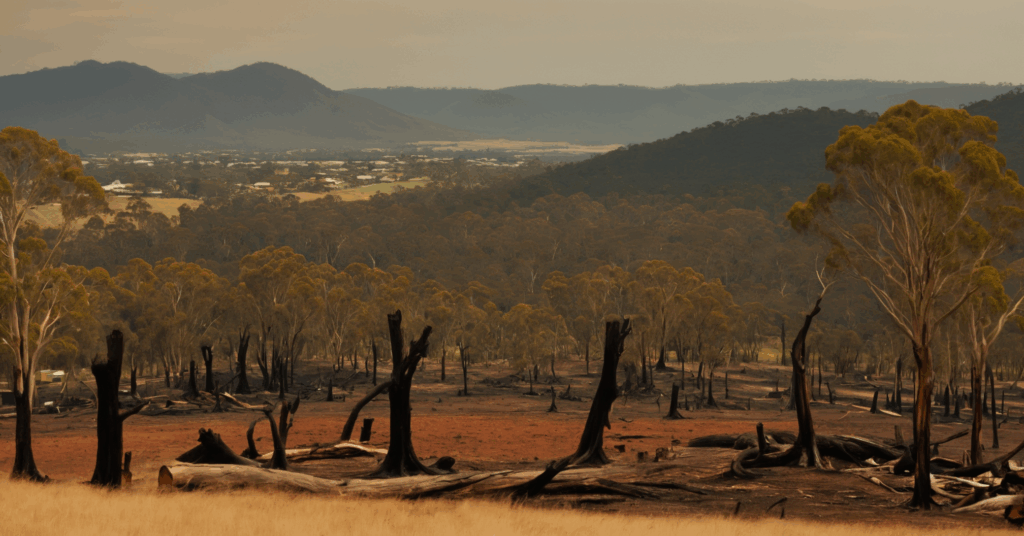
When a bushfire is finally extinguished, the danger isn’t over. Ash and debris left behind can contain hazardous substances like asbestos, heavy metals, and toxic chemicals that pose risks to your lungs and skin. Without the right precautions, cleaning up can expose you to serious health hazards.
Before you begin, it’s crucial to know how to safely remove bushfire ash, dispose of hazardous waste, and restore your home - all while protecting your health.
This guide outlines essential safety steps to help you avoid exposure to hazardous debris and improve your indoor air quality after a bushfire.
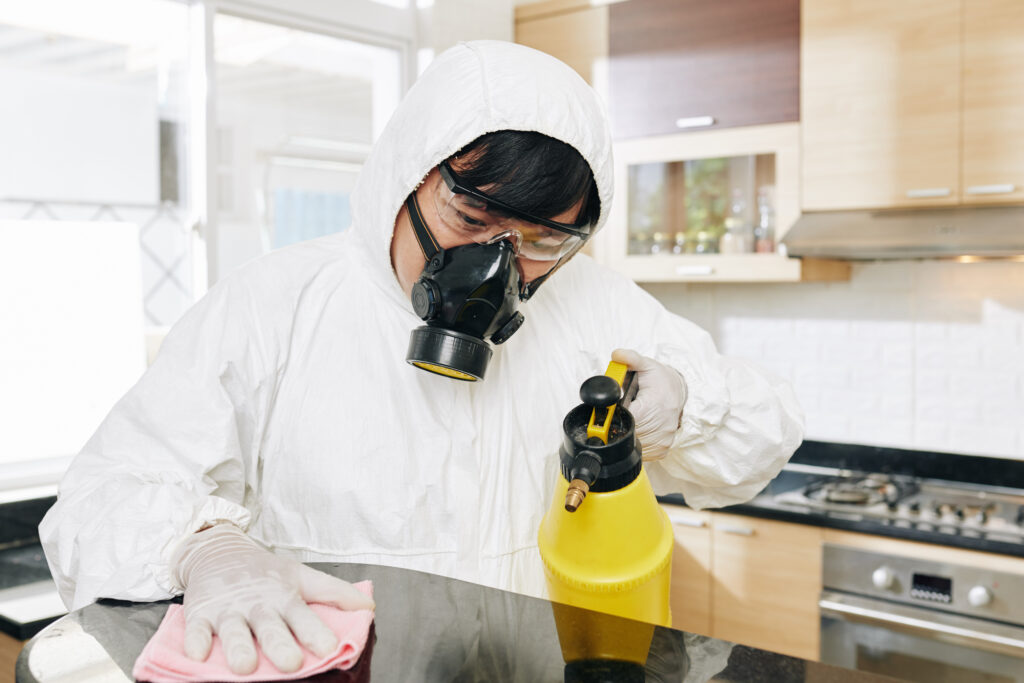
Bushfire ash contains PM2.5 – fine particles that can be inhaled deep into the lungs or absorbed through the skin. This makes protective gear essential when cleaning up after a fire.
Before starting cleanup, wear the following protective equipment:
✔️ An N95, KN95, or FFP2 mask to filter fine particles
✔️ Goggles (not regular safety glasses) to protect your eyes
✔️ Heavy-duty gloves to prevent skin exposure
✔️ Long-sleeved clothing and long pants to cover your skin
✔️ Sturdy, closed-toe shoes (avoid sandals or flip-flops, as debris may contain sharp objects)
✔️ Do not use leaf blowers or regular household vacuums—these can stir up toxic ash into the air
✔️ Lightly mist surfaces with water before sweeping to reduce airborne dust
✔️ Avoid dry dusting indoors, as this can spread particles
Even after cleaning, bushfire smoke particles can linger in the air for weeks. Running an IQAir HealthPro® 250 air purifier with HyperHEPA filtration can capture ultrafine ash particles down to 0.003 microns, improving air quality and reducing health risks.
💡 Did you know? Standard HEPA filters only trap particles down to 0.3 microns, but the IQAir HealthPro® 250 removes even the tiniest airborne toxins — right down to .003 microns. That’s 100x better than HEPA standard - including smoke and soot that remain after bushfires.
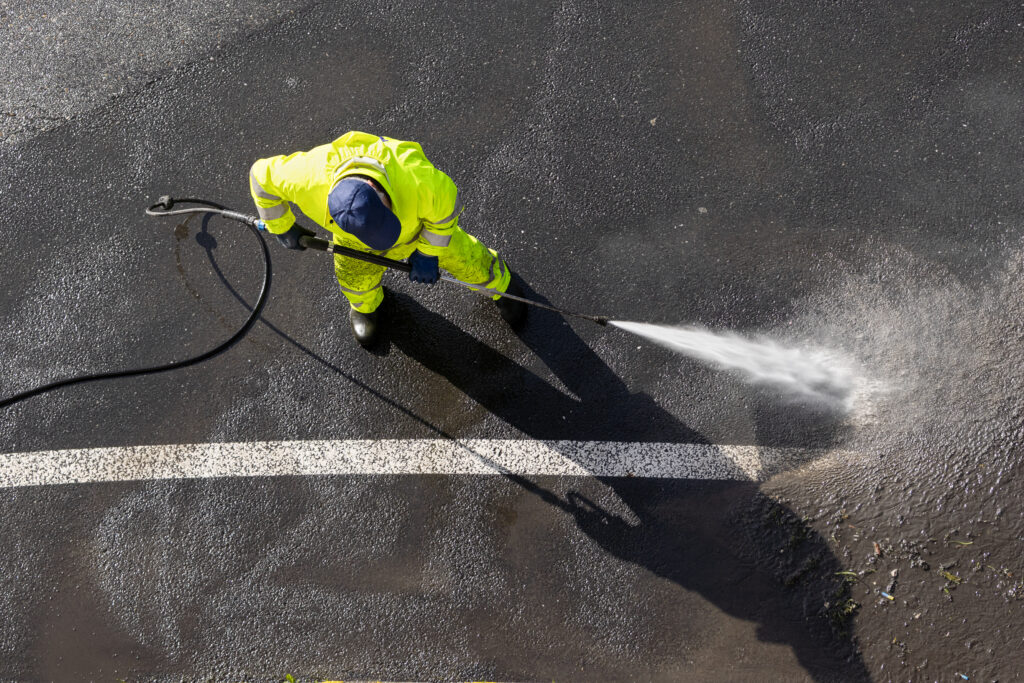
Bushfire ash can contain hazardous substances such as asbestos, heavy metals, and carcinogenic chemicals. It can settle both indoors and outdoors, requiring careful cleaning to prevent exposure.
✔️ Lightly mist driveways, patios, and outdoor surfaces with water before sweeping
✔️ Shovel large debris carefully to prevent spreading contaminants
✔️ Seal collected ash in plastic bags before placing it in the bin to stop it from becoming airborne
✔️ Do not mix ash with compost or use it in gardens—bushfire ash may contain heavy metals and toxins that can contaminate soil and water
⚠️ Check with your local waste management authority before disposing of ash. Some councils require bushfire ash to be handled as hazardous waste and taken to designated disposal sites.
✔️ Wipe down all hard surfaces with a damp cloth or mop
✔️ Use a non-toxic cleaner for walls, floors, and countertops
✔️ Do not dry dust or sweep indoors, as this spreads fine ash into the air
✔️ Wash soft furnishings, bedding, and clothing separately in cold water—do not shake out ash-covered fabrics indoors
✔️ Check air filters and ducts for soot buildup if your home’s ventilation system was running during the fire
🔥 Pro tip: IQAir’s AirVisual Pro air quality monitor can track indoor air pollution levels so you know when it's safe to stop filtering your air.
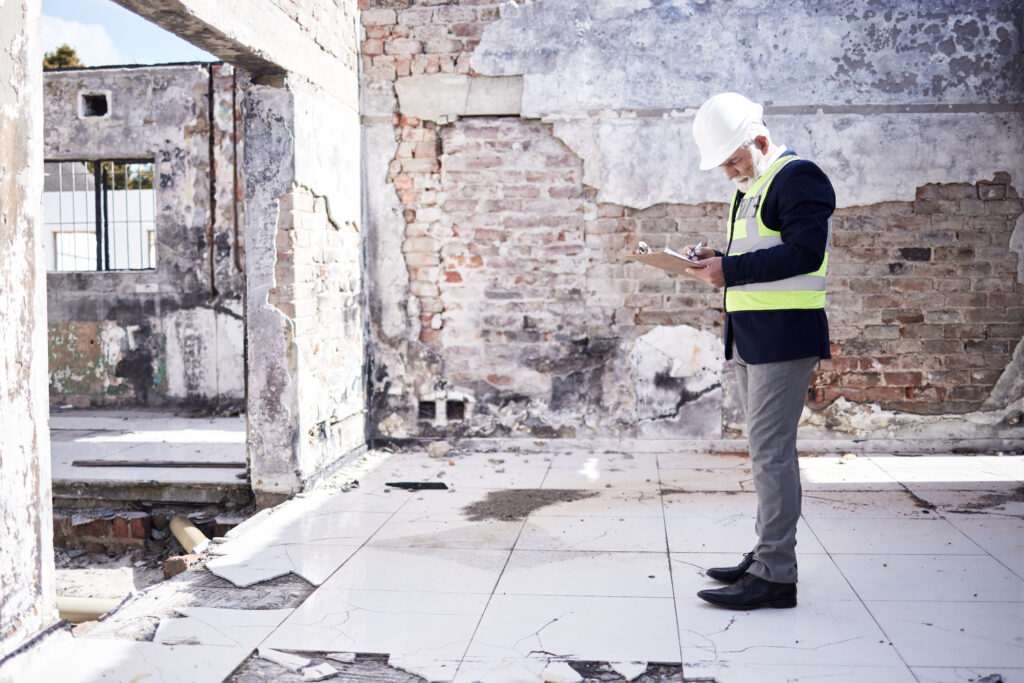
Fire-damaged buildings may have compromised structural integrity. Before entering, consider having a structural engineer or inspector assess the safety of your home.
✔️ Fires can weaken floors, walls, and ceilings, increasing the risk of collapse
✔️ Burnt materials like insulation, treated wood, and plastics can release toxic chemicals when disturbed
✔️ For large-scale fire damage, consider hiring professionals who specialise in hazardous material cleanup
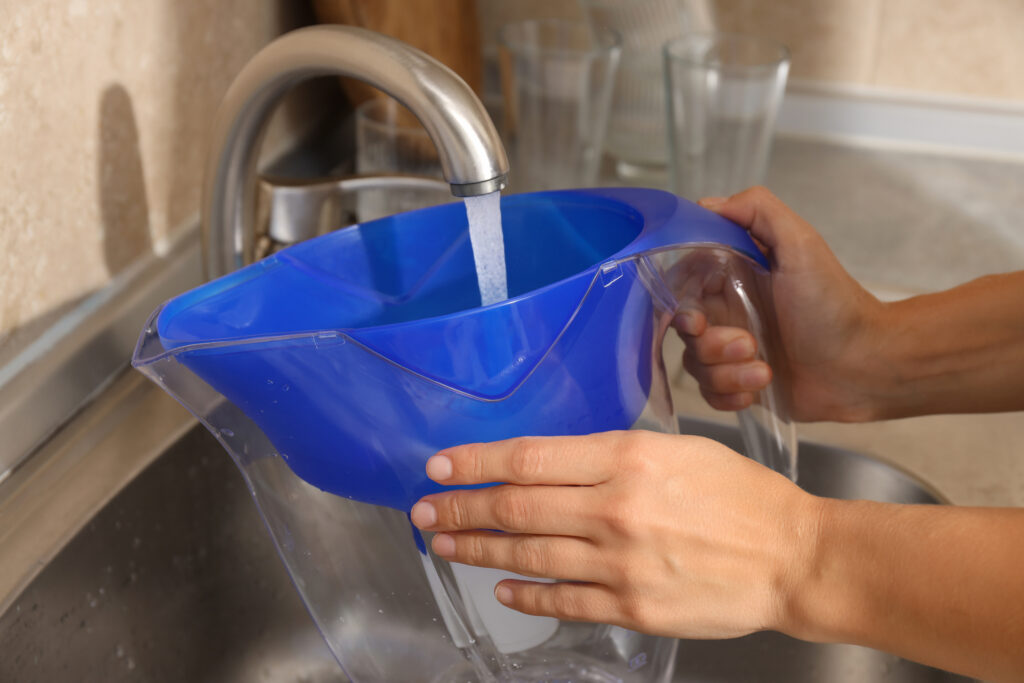
Bushfires can contaminate drinking water and food supplies with ash, smoke residues, and toxic chemicals. Following the right safety measures can help prevent exposure to dangerous substances.
Bushfires can compromise water quality, contaminating pipes and supply lines with chemicals like benzene and volatile organic compounds (VOCs). If local authorities issue a “Do Not Drink” Notice, follow these guidelines:
✔️ Do not drink, cook with, or brush your teeth with tap water
✔️ Do not boil contaminated water—some chemicals can become airborne when heated
✔️ Use bottled water for drinking, cooking, and hygiene until officials confirm the tap water is safe
✔️ If the power was out for more than four hours, discard perishable foods such as meat, dairy, and eggs
✔️ Do not refreeze thawed food, as it may already be unsafe to consume
✔️ Throw away food exposed to ash or soot
✔️ Sealed cans and jars may be safe, but wash them thoroughly before opening
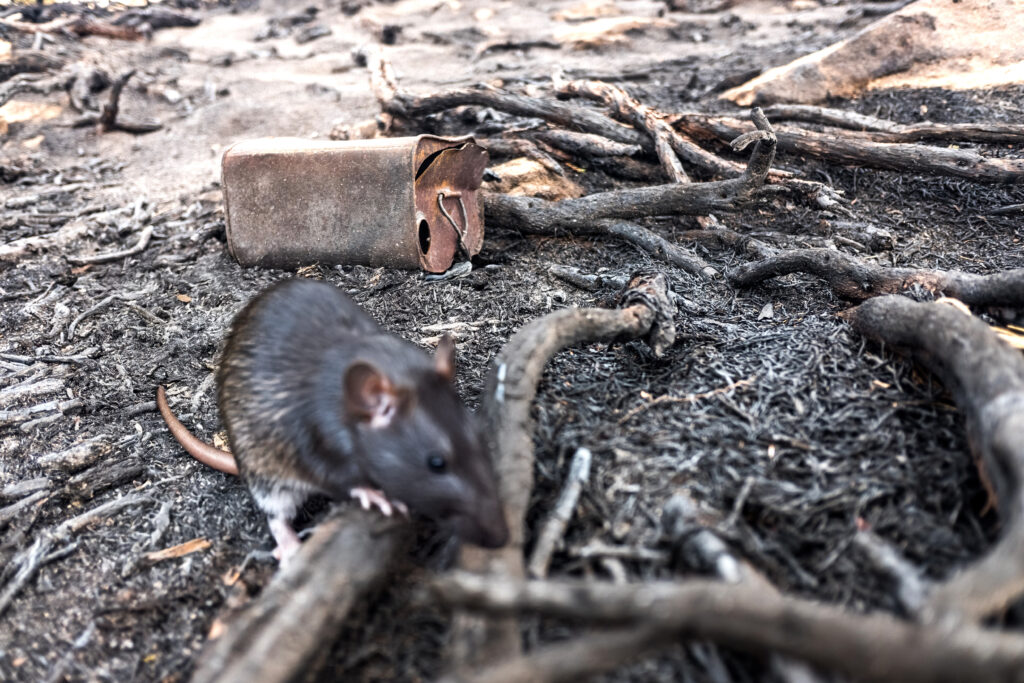
Bushfires can displace wildlife, increasing encounters with snakes, rodents, and other animals in fire-affected areas.
✔️ Keep food and rubbish in sealed, rodent-proof containers to avoid attracting unwanted wildlife
✔️ Check for animal nests before moving debris
✔️ If you encounter injured or displaced wildlife, do not attempt to handle them—contact local animal rescue services for assistance
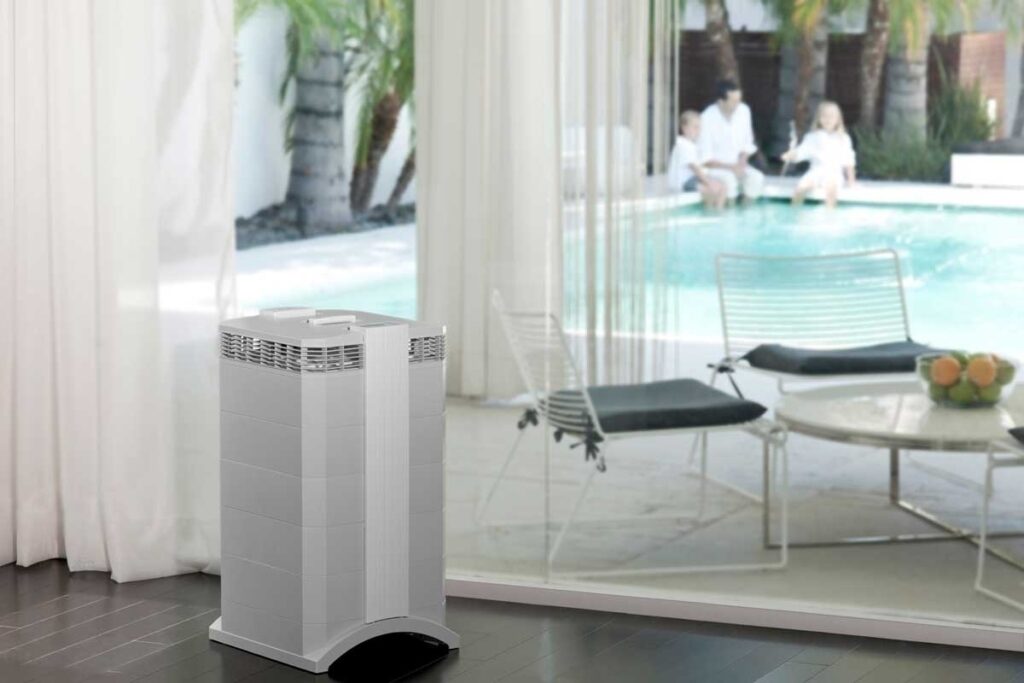
Even after surfaces are cleaned and debris is cleared away, airborne pollutants can remain inside your home for days—or even weeks—following a bushfire. These invisible particles, especially PM2.5 and ultrafine soot, are among the most harmful to your health, particularly for those with asthma, respiratory conditions, or allergies.
That’s where high-performance air purifiers come in. Using advanced filtration, air purifiers help eliminate fine ash, smoke particles, and toxic gases that standard cleaning methods can’t remove.
💨 IQAir HealthPro® 250 – This top-tier purifier is equipped with a medical-grade HyperHEPA filter that traps ultrafine particles down to 0.003 microns—far beyond what standard HEPA filters can achieve. It’s ideal for households looking to remove bushfire smoke, allergens, and other pollutants with hospital-grade precision.
🌿 IQAir Atem® Desk – Perfect for smaller rooms, home offices, or bedrooms, the Atem Desk provides personal zone air purification with the same HyperHEPA technology. It’s a compact solution for clean air where you need it most.
📊 IQAir AirVisual Pro – Don’t just guess your air quality—measure it. The AirVisual Pro monitor gives real-time feedback on indoor and outdoor pollution levels, so you know when it’s safe to turn off your air purifier or open your windows.
🛡️ Pro tip: Keep your air purifier running continuously for at least 7–10 days after a bushfire to ensure thorough removal of lingering airborne toxins.
By combining air purification with safe cleaning practices, you can protect your lungs and create a healthier indoor environment during the critical recovery phase.
Cleaning up after a bushfire requires caution, preparation, and the right safety measures. Toxic ash, debris, and fire-damaged structures can pose serious health risks, making protective gear, damp cleaning methods, and proper disposal essential.
✔️ Wear protective gear to prevent inhaling or touching toxic ash
✔️ Use water misting and HEPA-filter vacuums to minimise airborne particles
✔️ Run an IQAir HealthPro® 250 air purifier to remove toxic bushfire pollutants from the air
✔️ Properly dispose of ash in sealed bags—do not compost or mix with soil
✔️ Follow water and food safety guidelines to avoid exposure to contaminants
✔️ Be mindful of displaced wildlife and avoid disturbing hazardous debris
Even after visible cleanup, bushfire smoke particles can remain in the air for weeks. Investing in proper air filtration with an IQAir HealthPro® 250 and monitoring your air quality with the AirVisual Pro will help ensure your home remains a safe and healthy environment.
